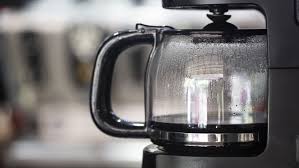Wouldn’t it be nice to have better tasting coffee right in your own home or office? Well, one of the most important steps you can take to get a better cup of coffee is to regularly clean your coffee maker
Why Should You Clean Your Coffee Maker?
A buildup of lime and mineral deposits from your water can impact your coffee maker’s performance and coffee taste, so your coffee maker must be cleaned on a regular schedule to keep it operating at maximum efficiency. But how you clean your machine will vary depending on whether you have a programmable coffee maker with a cleaning cycle or a manual coffee maker. We’ll take a look at both methods. No matter what type of coffee maker you have, cleaning your carafe, filter basket and permanent filter are done the same way. Let’s take a look at how it’s done.
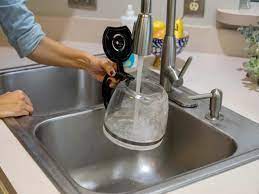
Preparing Coffee Maker for Cleaning
Before you get started cleaning your carafe filter basket and permanent filter, be sure that the coffee maker’s turned off, unplugged, and cool. Remove the filter basket and carafe and wash them in a solution of hot water and mild liquid soap such as
Mrs. Meyer’s Hand Soap, Made with Essential Oils
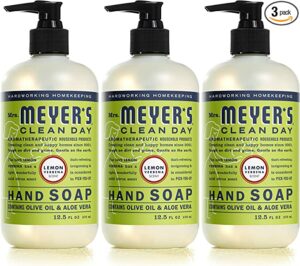
Never use abrasive cleaners, steel wool pads, or other abrasive materials. Alternately, you can place glass carafes and lids, filter baskets and permanent filters in the top rack of your dishwasher.
However, the water filter disc is not dishwasher safe. You should clean the carafe, filter basket and permanent filter after each use, and no matter what type of coffee maker you have, here’s an important tip to remember. Never immerse the coffee maker itself in water or any other liquid or place in the dishwasher. Always consult your instruction manual for specific details on cleaning your specific coffee maker model.
Baking Soda instead of Vinegar
Baking soda is popular household cleaner. Baking soda is a household staple for many people, and it’s no wonder why. Much like lemon juice, a baking soda solution is easier to rinse out of your coffee maker than vinegar. Soda can be bought in many grocers and other stores, you can choose any manufacturer, such as
Arm & Hammer Baking Soda
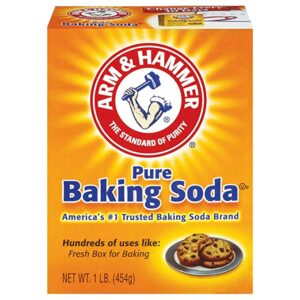
This inexpensive pantry item can be used for everything from cleaning your oven to unclogging your drains. It’s also great for cleaning coffee makers. Baking soda is a natural disinfectant that will help remove these contaminants from your coffee maker.Just like with any other appliance, it’s important to clean your coffee maker regularly to prevent the build-up of mold, mildew, and bacteria.
Step-by-step Instructions for Cleaning Manual Coffee Machine
If you have a non-programmable or manual coffee maker, here is the procedure to follow to clean your machine.
- Mix one cup of water with a quarter cup of baking soda and fill the carafe with this solution.
- Lift the lid and pour the vinegar into the water reservoir of the coffee maker.
- Place a filter into the removable filter basket and close the lid. If you use water filtration, be sure to remove the water filter disc prior to cleaning.
- Place the empty carafe on the warming plate. Turn the switch to the on position. When three cups have flowed through, turn the coffee maker to off.
- Let stand for 30 minutes to break down deposits.
- After 30 minutes, turn coffee maker to on and let the remaining one more cup of baking soda solution pass through the coffee maker. Once the brew cycle is complete, discard the vinegar solution and rinse the carafe thoroughly with clean water.
- Remove and discard the paper filter used during the cleaning cycle.
If a permanent filter was used during cleaning, remove it and rinse it thoroughly before replacing it in the filter basket. If you need new filters, you may choose one at Amazon.com, for example, Niveaya V60 Cone Coffee Filters – 200 Count, Coffee Filter #2 Cone Paper, 2-4 Cup, Natural Paper Coffee Filter.
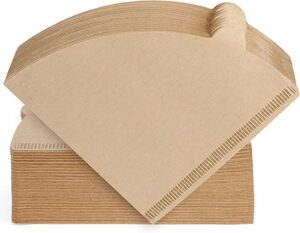
To flush out all traces of baking soda, pour a carafe full of clean, fresh water into the coffee maker. Turn the switch to the on position. Allow water to cycle through. Discard water and turn the coffee maker off. Repeat the step until vinegar odor is no longer noticeable.
That’s it. You just cleaned your manual coffee maker.
Video: How to Clean Your Coffee Maker The Eco-friendly Way
Cleaning a Programmable Coffee Maker
If you have a programmable coffee maker with a special cleaning cycle, you can easily maintain and clean mineral deposits from your coffee maker. The red clean light will turn on and flash to let you know that your coffee maker needs to be cleaned and the light will turn off after the clean cycle has been completed.
Here is a procedure to use the cleaning cycle.
- Pour four cups of baking soda solution into the water reservoir. Before cleaning, make sure that the water filtration disc is removed from the machine.
- Place a basket style paper filter, or permanent filter into the filter basket and close the brew basket lid. Place the empty carafe back into the unit, centered on the warmer plate.
- Press the select off button until the red clean indicator light turns on. For your convenience the cleaning cycle is automatic and the entire cycle will take 45 to 60 minutes to complete.
- During the cleaning process, your coffee maker will slowly brew three cups of vinegar. It will then pause for 30 minutes to break down deposits, but the clean light will remain on to alert you that the process is still active.
- After the 30 minutes have passed, your coffee maker will brew the remainder of the vinegar through the unit.
When complete, the clean light will turn off and your coffee maker will turn off. Discard the vinegar and rinse the carafe thoroughly with clean water. Fill the water reservoir with clean, fresh water and place the empty carafe back on the coffee maker, centered on the warming plate. Remove and discard the paper filter used during the cleaning cycle.
If a permanent filter was used during cleaning, remove it and rinse it thoroughly before replacing it in the filter basket. Begin brewing and allow the full brew cycle to complete. Repeat this fresh water step one more time. Your cleaning process is now completed.
Maintaining a regular schedule of cleaning your coffee maker will help to keep your machine ready to brew that next pot of delicious hot coffee.
FAQs
How Often Should You Clean Your Coffee Maker?
Without proper care, coffee residue and mineral buildup can wreak havoc on your machine, affecting the quality of your brew and even causing your brewer to malfunction. “You should clean your coffee maker every 40 to 80 brews, depending on the model of your coffe machine.
What can I use to clean coffee maker without vinegar?
Baking soda is affordable and non-toxic cleaning product, and its alkaline properties make it an effective cleaning product as well.
Is it OK to run bleach through a coffee maker?
Never use bleach to clean the brewing mechanism of a coffeemaker.
Can I run soapy water through my coffee maker?
Yes, you may create a solution using fresh water and soap. This will be the primary agent for cleaning your appliance, but you can add a cup of vinegar if you prefer.
Can a dirty coffee maker make you sick?
Coffee mold spores can cause allergies. Therefore, one cup of contaminated coffee will be enough to start experiencing a whole range of allergy symptoms, such as headaches, congestion, coughing, sneezing and watery eyes.
